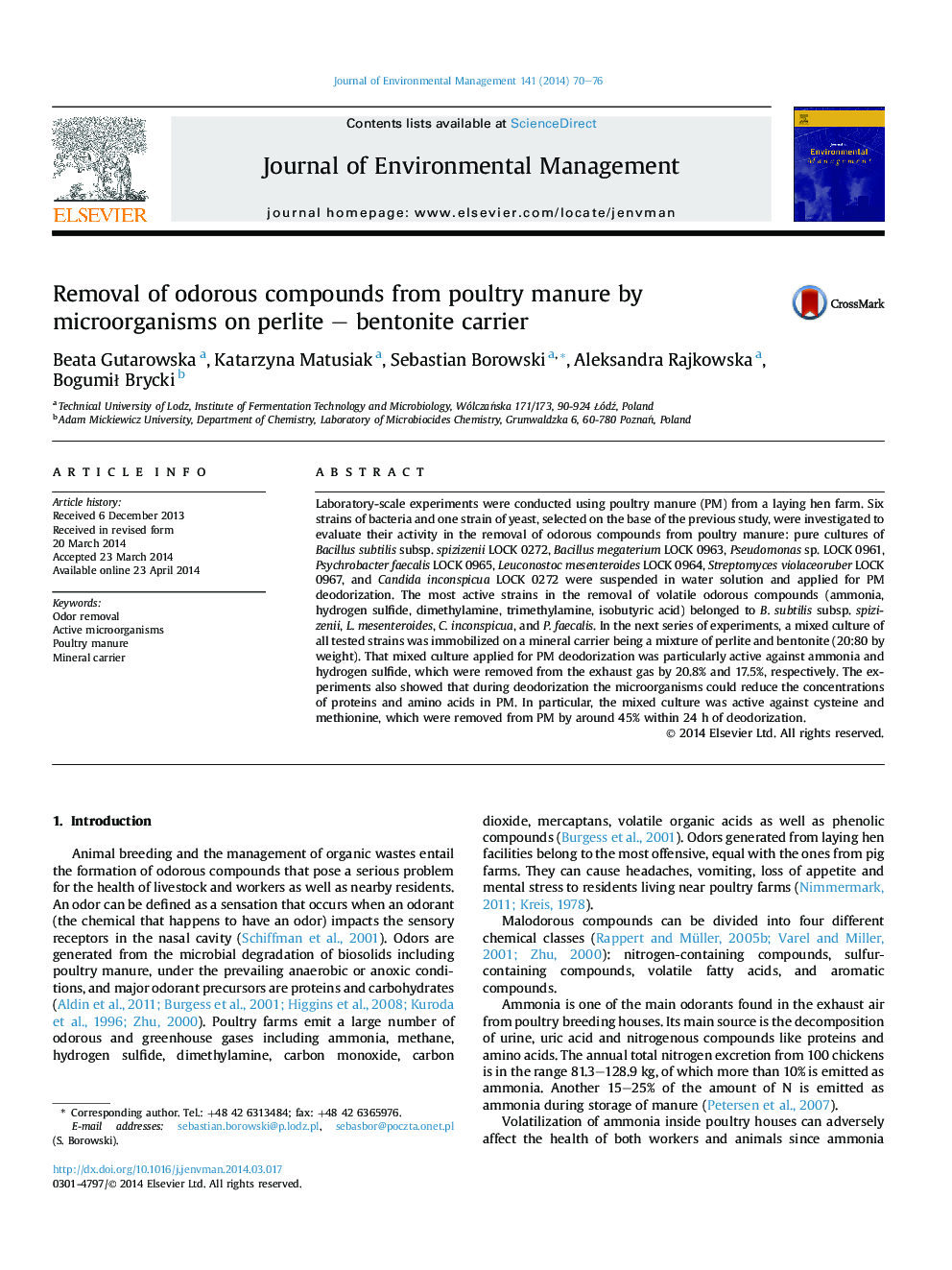| Article ID | Journal | Published Year | Pages | File Type |
|---|---|---|---|---|
| 1055910 | Journal of Environmental Management | 2014 | 7 Pages |
•Microbial deodorization of poultry manure (PM) was investigated.•Six strains of bacteria and one yeast were applied for deodorization of PM.•Microbial mixed culture was the most active in NH3 and H2S removal from PM.•Microorganisms reduced the contents of proteins and amino acids in PM.
Laboratory-scale experiments were conducted using poultry manure (PM) from a laying hen farm. Six strains of bacteria and one strain of yeast, selected on the base of the previous study, were investigated to evaluate their activity in the removal of odorous compounds from poultry manure: pure cultures of Bacillus subtilis subsp. spizizenii LOCK 0272, Bacillus megaterium LOCK 0963, Pseudomonas sp. LOCK 0961, Psychrobacter faecalis LOCK 0965, Leuconostoc mesenteroides LOCK 0964, Streptomyces violaceoruber LOCK 0967, and Candida inconspicua LOCK 0272 were suspended in water solution and applied for PM deodorization. The most active strains in the removal of volatile odorous compounds (ammonia, hydrogen sulfide, dimethylamine, trimethylamine, isobutyric acid) belonged to B. subtilis subsp. spizizenii, L. mesenteroides, C. inconspicua, and P. faecalis. In the next series of experiments, a mixed culture of all tested strains was immobilized on a mineral carrier being a mixture of perlite and bentonite (20:80 by weight). That mixed culture applied for PM deodorization was particularly active against ammonia and hydrogen sulfide, which were removed from the exhaust gas by 20.8% and 17.5%, respectively. The experiments also showed that during deodorization the microorganisms could reduce the concentrations of proteins and amino acids in PM. In particular, the mixed culture was active against cysteine and methionine, which were removed from PM by around 45% within 24 h of deodorization.
